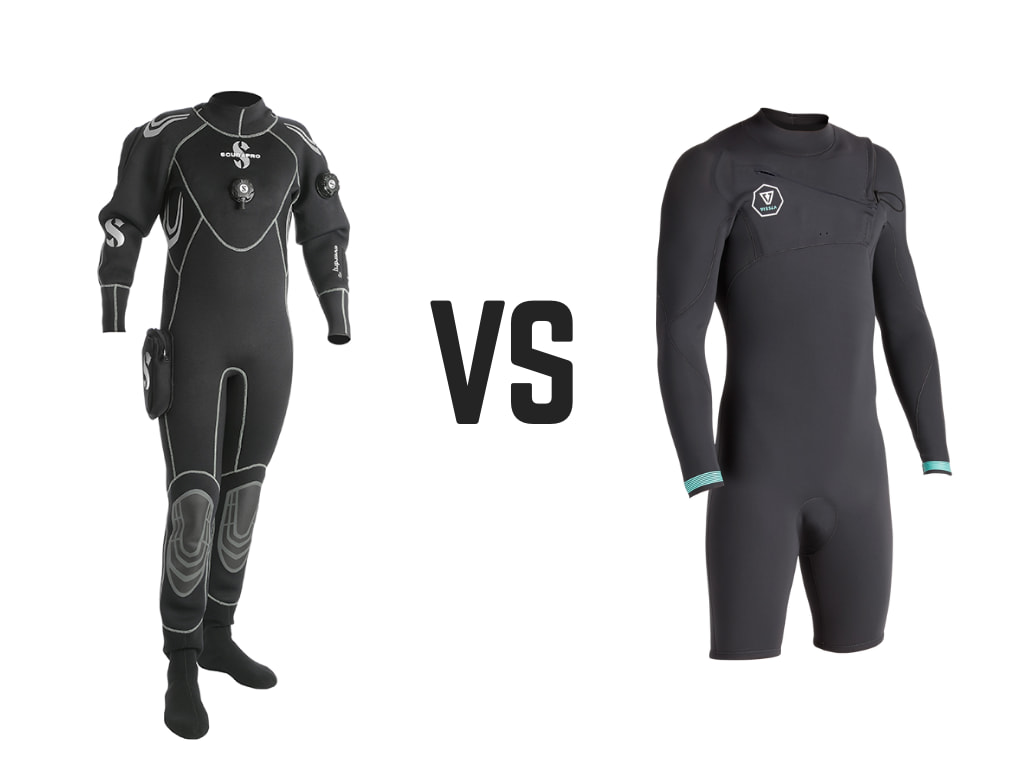A dry suit is a specialized garment for divers, designed to provide complete waterproof protection. It consists of a watertight layer with rubber seals around the neck and wrists, ensuring no water enters, allowing divers to stay dry and warm underwater.
It’s made of durable material. Seals at the neck and wrists block water. This suit allows you to dive in cold water comfortably. It also offers more buoyancy control. Here’s why it matters:
- Safety: Protects against hypothermia.
- Comfort: Stay warm and dry.
- Versatility: Dive in various conditions.
It keeps you safe and comfortable. Ready to dive deeper into this topic? Let’s go.
Key Takeaways:
- A dry suit is designed for divers, offering complete waterproof protection in cold waters.
- It’s versatile, and suitable for activities like kayaking, search and rescue, and scientific research.
- Proper training and maintenance are essential for safety and longevity.
What is a Dry Suit?
What is a dry suit? It’s special gear for divers. Made of tough material like neoprene or Gore-Tex. It has tight seals at the neck and wrists. These seals keep water out. You stay dry inside. This is key for cold-water diving.
It protects you from cold and hypothermia. The suit has a zipper. It’s usually on the back or front. You can wear warm clothes under it.
This adds extra insulation. Some suits even have boots attached. A dry suit is different from a wet suit. It offers better thermal protection. It also gives you more buoyancy control. In short, a dry suit makes diving safe and comfortable in cold water.
How Does a Dry Suit Work?
A dry suit keeps you dry underwater, like a sealed shield. Let’s see how it works.
Creating a Waterproof Seal
Neck Seals: Neck seals are like tight collars that prevent water from seeping in. They encircle your neck snugly, ensuring a watertight boundary.
Wrist Seals: Wrist seals act as watertight cuffs around your wrists. They keep your arms dry by sealing off any potential entry points.
Ankle Seals: Similar to wrist seals, ankle seals create a barrier around your ankles. They block any chance of water creeping in from below.
Insulation and Thermal Protection
Layering Underneath: Inside the dry suit, you can wear insulating layers. These layers trap your body’s warmth, keeping you cozy in chilly waters.
Keeping Dry and Warm: The dry suit’s primary job is to keep you dry. By preventing water from entering, it ensures you stay warm even in cold underwater environments.
Buoyancy Control in Dry Suits
Dry suits also play a role in buoyancy control. They can be equipped with inflation and deflation systems, allowing you to adjust your buoyancy as needed during your dive.
A dry suit is your trusty companion for underwater adventures. It’s like your personal waterproof fortress, allowing you to explore beneath the surface while staying dry and warm.

Dry Suit vs. Wetsuit: A Detailed Comparison
Dry Suit vs. Wetsuit: What’s the difference? Both are diving suits. But they serve different needs. A dry suit keeps you dry. It’s for cold water. Seals at the neck and wrists block water. You can wear warm layers underneath. A wetsuit lets water in. It’s for warmer water. The water heats up and keeps you warm.
Now, let’s compare:
| Feature | Dry Suit | Wetsuit |
| Material | Neoprene, Gore-Tex | Neoprene |
| Water Entry | None | Allowed |
| Thermal Layer | You add | Built-in |
| Seals | Neck, wrists | None |
| Buoyancy | Adjustable | Fixed |
| Use Case | Cold water, long dives | Warm water, short dives |
Choose a dry suit for cold water and better buoyancy. Pick a wetsuit for warm water and shorter dives.
What Activities Can I Use a Dry Suit For?
Curious about where you can use a dry suit? Let’s explore the various activities it’s perfect for.
Diving in Cold Water:
In icy waters, a dry suit is a diver’s ally. It keeps the chill at bay, ensuring an enjoyable dive without shivering.
Professional Uses (e.g., Search and Rescue):
Search and rescue operations often happen in unforgiving conditions. Dry suits offer protection and mobility, aiding professionals in their life-saving missions.
Water Sports (e.g., Kayaking, Surfing):
Kayakers and surfers brave cold waves with dry suits. These suits let them ride the waves comfortably and extend their aquatic adventures.
Scientific Research:
Scientists who study aquatic ecosystems rely on dry suits. Staying dry allows them to focus on their research without the distraction of wet clothes.
Benefits of Using a Dry Suit in Different Activities
Using a dry suit in various activities offers several advantages.
- Firstly, it allows for extended time in the water, as it keeps you warm and dry even in cold conditions. This is especially beneficial for divers who want to explore the depths without discomfort.
- Secondly, it provides comfort in chilly waters, making water sports like kayaking and surfing more enjoyable.
- Thirdly, for professionals like search and rescue teams, a dry suit is essential for protection and mobility in challenging environments.
- Lastly, scientists conducting research in aquatic settings can focus on their work without the distraction of wet clothes, increasing their efficiency.
The benefits of using a dry suit include prolonged water time, comfort in cold waters, protection for professionals, and enhanced productivity for researchers.
Training and Maintenance
Training and maintenance are crucial aspects of using a dry suit. Proper training ensures you know how to use it safely. Courses and certifications are available to teach you the ropes.
When it comes to maintenance, regular cleaning and care are vital. You should inspect your suit for damage and store it properly. For minor issues, you can even learn how to make simple repairs.
This helps prolong the life of your dry suit. Training and maintenance go hand in hand, ensuring your dry suit remains in good shape and keeps you dry during your underwater adventures.
Summary
A dry suit is an indispensable piece of gear for divers and water enthusiasts. It offers complete waterproof protection, keeping you warm and dry in cold waters. Its versatility extends to various activities, including professional use and scientific research.
To fully enjoy the benefits, proper training and regular maintenance are essential. By understanding how a dry suit works and caring for it diligently, you ensure a safe and comfortable experience in the underwater world.

